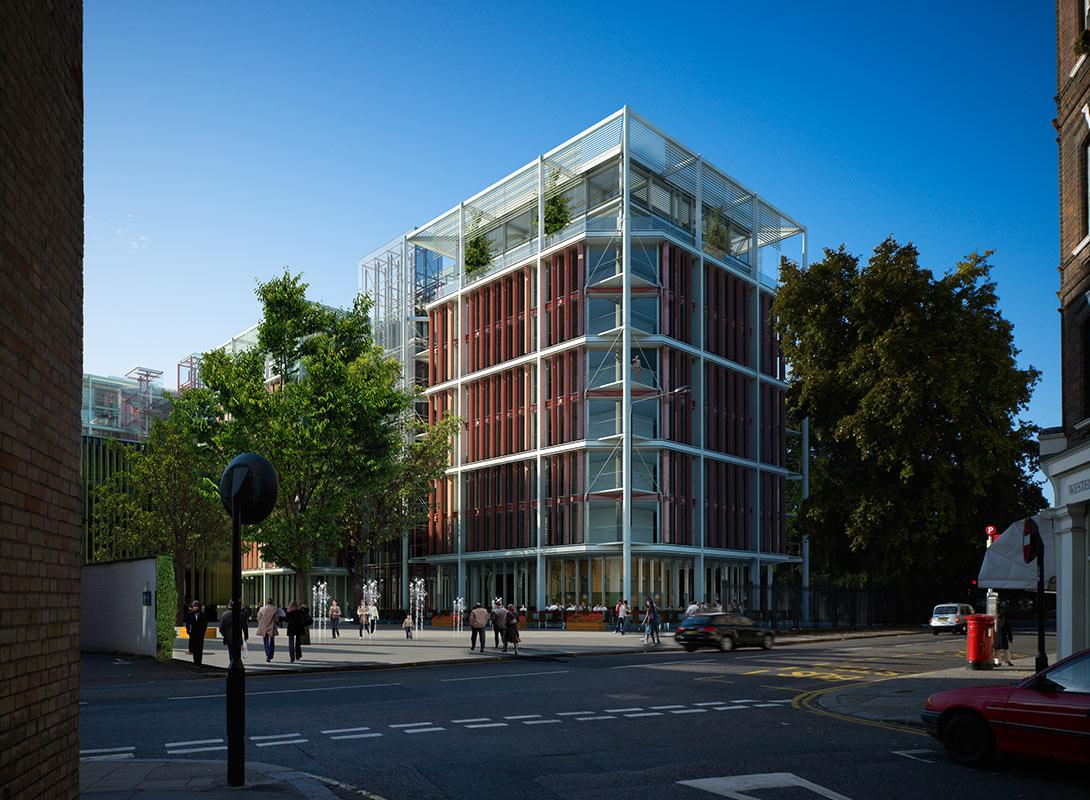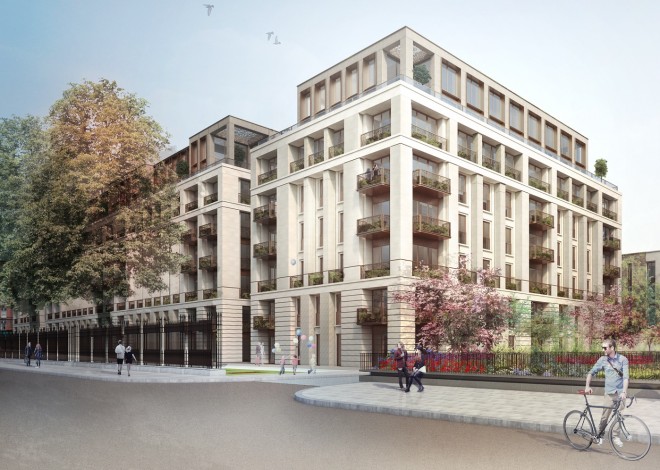As I was growing up, I could only take
Istanbul’s “suburban” trains very few times, usually on trips to my
grandmother’s house on the residential Marmara Sea waterfront neighbourhood of
Kucukyali. Berlin and Hamburg’s S-Bahns truly prepared me for the colourful
above-surface experiences of a city commute. That’s why I feel a special
connection to London’s Overground and the opportunities it gives one to travel
across this mega-agglomeration’s distinct “villages”. That is of course, when
you don’t have the time to walk through them for hours and hours in. Yet, there
is another mode of transport, in between the two, that repeatedly reminds me
why London is probably the greatest city on earth!
When you feel you’ve run out of ideas, just
get on your wheels and cycle through the city’s neighbourhoods – it is almost
irrelevant whether you are north or south of the river, heading east or west,
as long as you are within the “outer circles”. And when you do, you know
exactly why it is one of the most inspirational, and special “place”s.
I often hit the Regent’s Canal when I look
for such inspirations – not only for the strong bond I’ve developed with it
over the years but as its (though it’s hard to talk about the Canal as a single
entity when it has so many constituent parts) ongoing transformation from
London’s most underrated (or least appreciated) feature to that of a flaneur’s
magnet always offers new sights and negotiating the narrow towpath with fellow
wanderers and cyclists often makes for a slightly tense and enjoyable journey.
However, after an averagely boring day’s work, a few hundred yards’ worth canal
ride around King’s Cross and the urban jungle around it did not suffice – which
is when I decided to take it to a next level to visit my friends’ bookshop/coffee
in Leytonstone… starting the journey all the way from Camden Town.
First you gaze at all the tourists who are
busy gazing at every possible clichéd image of Camden they’ve read in their
guidebooks and wonder how people never get tired of it. Kids selling (and
consuming) weed still hang out on the Kentish Town Rd. side of the canal, while
punks walk across the bridge on Camden High Street; the
food/tourist-trap-souvenirs stalls near the stables are busy as always and
people try to look for traces of the late Amy Winehouse among the busy
neighbourhood’s streets.
The crowds give way to the residential and
urbane setting of Kentish Town, where I lived for three months back in the
spring of 2008, the wealthy/yuppie locals mingle in the slightly run down Victorian
pubs and I notice further new developments near the beautiful red-bricked old
public baths (now run as a private sports/leisure centre). The main road with
its Phonecia (Middle Eastern grocery store), Nandos, and The Oxford (pub)
hasn’t changed a bit as I turn right to take the hill up to Tufnell Park. A
quick glimpse at Boston Arms where I recall promising myself years ago that I
would go for a pub quiz and I turn onto Tufnell Park Rd, a wide, leafy, quiet
road, which to my surprise, I have never passed through before. It is
non-descript as it could exist anywhere in London, yet, you know it firmly
belongs to this city.
Because nowhere else, it would meet a road
like Holloway Road, where crowds of young, black school kids play at the
traffic light in front of the majestic and run-down Odeon Holloway while all
sorts of small late afternoon/early evening trading take place in the side
roads leading to Finsbury Park. I take one of them, passing close to Crouch
Hill via Hornsey Rd, where I lived for about a month last winter, in between
moving around. K. must either be on the way or just have made it home from work
along the same roads I am roaming now. As I turn towards Finsbury Park, the
smell of curry and kebab mix together, which will stick in the air for a good
mile until Manor House when kebab will compete dominate the scene. S.’s
grandparents lived just south of here – I recall our journey to the Emirates to
watch Arsenal play Partizan, also joined by K.
At Manor House, turning left will take me
to Haringey, and to one of countless trips to one of the famous Turkish
restaurants or shops that sell everything, like that evening when I joined M.
in his attempts to find a Turkish teapot. When I had first arrived in this town
in 2007, I knew very few people and when I. invited me to a Halloween party,
and our long-lasting friendship started that evening with her and C., I had no
idea we ended up at someone’s house party in this area. But I remember my last
visit to Finsbury Park, the proper park, again, in 2008, to Rise Festival where
people gathered for music and fun with a purpose: to keep racism out of the
streets of London.
Further down Seven Sisters Rd. the
Reservoirs stay to my right and the famous Woodberry Down Estate, now leaving
way to a contemporary (read ugly) skyscraper appears where F. did her Master’s
thesis project, speaking to the estate’s residents and producing artworks that
recorded their memories of life in this northeast London social housing estate.
Rows of further estates dot this highway-like road as cars speed-race past me –
I forget to take Amhurst Park and continue on Seven Sisters Rd, to cycle past
the very street I walked with Z. and E.
only two weeks ago on our way from Dalston, musing about London’s
architectural and social diversity and the fate of the Alevi minorities and
their political struggles. I finally hit High Rd. to turn righ at the
magnificient St. Ignatius Church, built between 1894-1911 in two stages upon
the invitation to Jesuits, who form an integral part of Umberto Eco’s novel The
Prague Cemetery I’ve recently been reading.
However, the short climb from High Rd. to
Stamford Hill brings you to the largest centre of Hasidic Jews in Europe and
sidelock-haired men joined by their wives pushing double-baby prams appear
suddenly. Only 5 minutes ago, the front sign of what looked like a
left-from-the-70s hotel read the name “Kent” and now that has transformed into
Kadimah Hotel, advertised as a kosher B&B. On the climb down to Clapham, I
notice gigantic new housing, typical of the current trend, the light
brown-stone styled façades with floor-to-ceiling windows surrounded by private
greenery and inner courtyards.
Lea Bridge Rd takes me to all the way Leyton
and this stretch is reminiscent of a drive in a continental European highway
with huge, Italian furniture shops are joined by scrap metal and tyre yards as
I cycle through my 5th borough following Camden, Islington,
Haringey, Hackney, now into Waltham Forest. On the edge to Wanstead, I arrive
at my destination, 45 minutes and 14KM in – at All You Read is Love, run by my
beloved Danish sibling duo A. and K. I only sent them a picture from Stonehenge
last weekend as I was walking around in the region – my first encounter with
Stonehenge was with them at our first trip to End of the Road Festival in 2008…
… only to realise they close the
bookstore/coffee shop at 7PM and I am half hour late! Yet, this allows me to
continue cycling back homewards before the dark and before my sweat dries out.
Going through infamous Leyton where most people still have false and unfounded
interpretations of, I remember another Halloween party, from 2009, the only
other time I’d visited the neighbourhood before A. and K. set up shop here.
That is of course, discounting the 2013 New Year, where I accidentally took the
bus N55 almost all the way to Baker’s Arms – a place I was always curious
about, like one of those endstations of an Underground line that you never make
the journey to… and today, I even passed by it.
The way back is a journey through
ex-industrial Londo, via more curry-towns and the behemoth that is the Olympic
Park. I grab a quick panorama of the Stadium shot after breezing past the new
homes and the much-acclaimed Chobham Academy – the Stadium where I have the
fond memories of performing at the Opening Ceremony of the 2012 London Olympics
and soon enough I am once again crossing over the water to Hackney Wick, the
hipster/clubbing mecca, which, to me, is still first and foremost that place
where people saw us on the streets with our costumes and couldn’t believe their
eyes a few years ago…
And it is now home territory, through the
massive park Queen Victoria “gifted” to this part of London because the
easterly winds always kept this side of the Thames estuary dirty with the
port/industry smog until half a century ago and the “notorious slum dwellers” of
London needed some fresh air.
23 KM and just over an hour in – having taken
in another set of 6-7 different worlds, past the postcodes N1, N7, N4, N15,
N16, E5, E10, E11, E15, E20, E9 and E2 and I remember R.’s words, 11 years ago
when she told me how much she was loving London with its culture, geography and
people. 11 years ago, it wouldn’t cross my mind I would live here one day. 6
years ago still, I didn’t have the confidence to claim I would eternally fall
in love with it.





.jpg)
